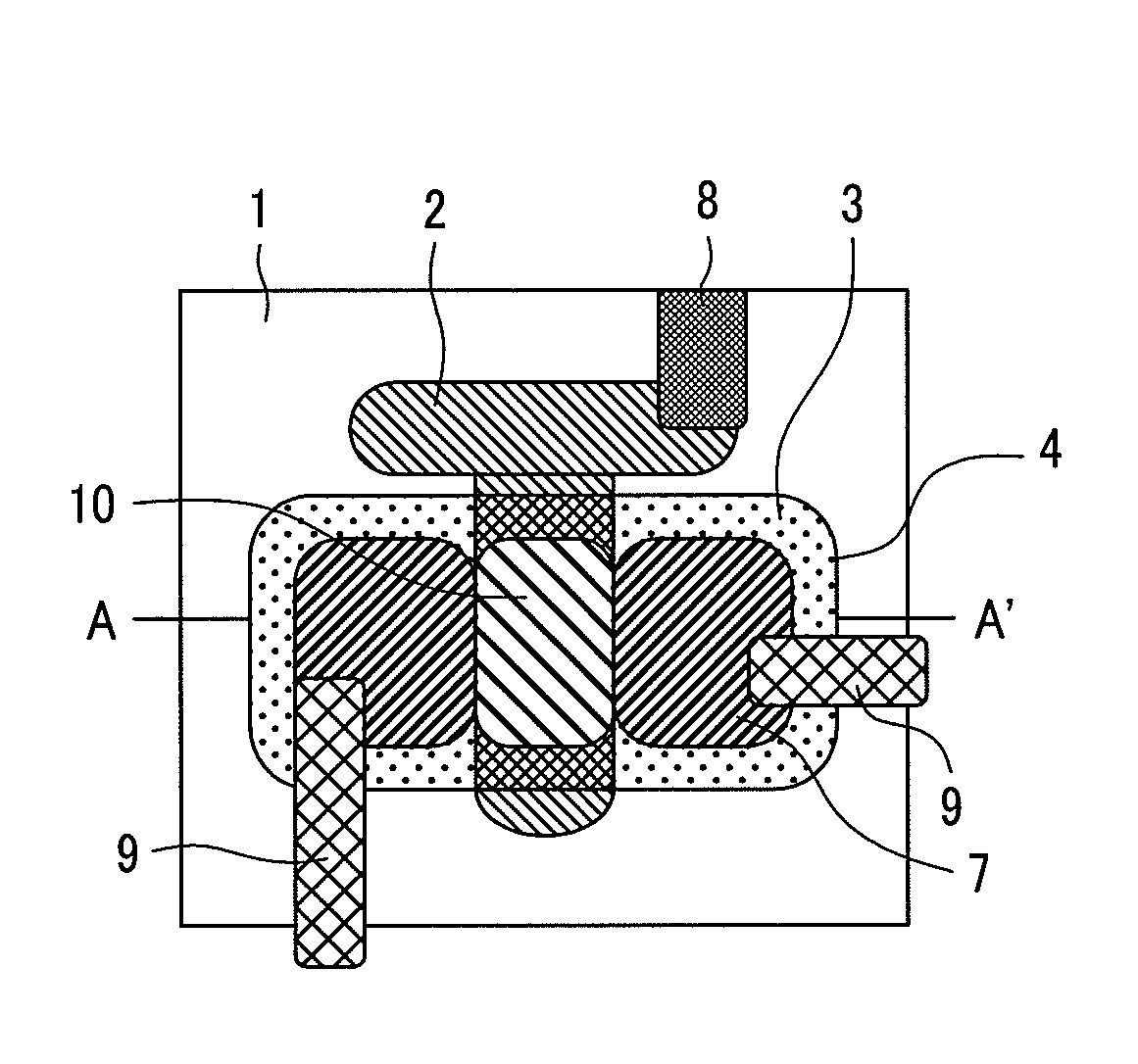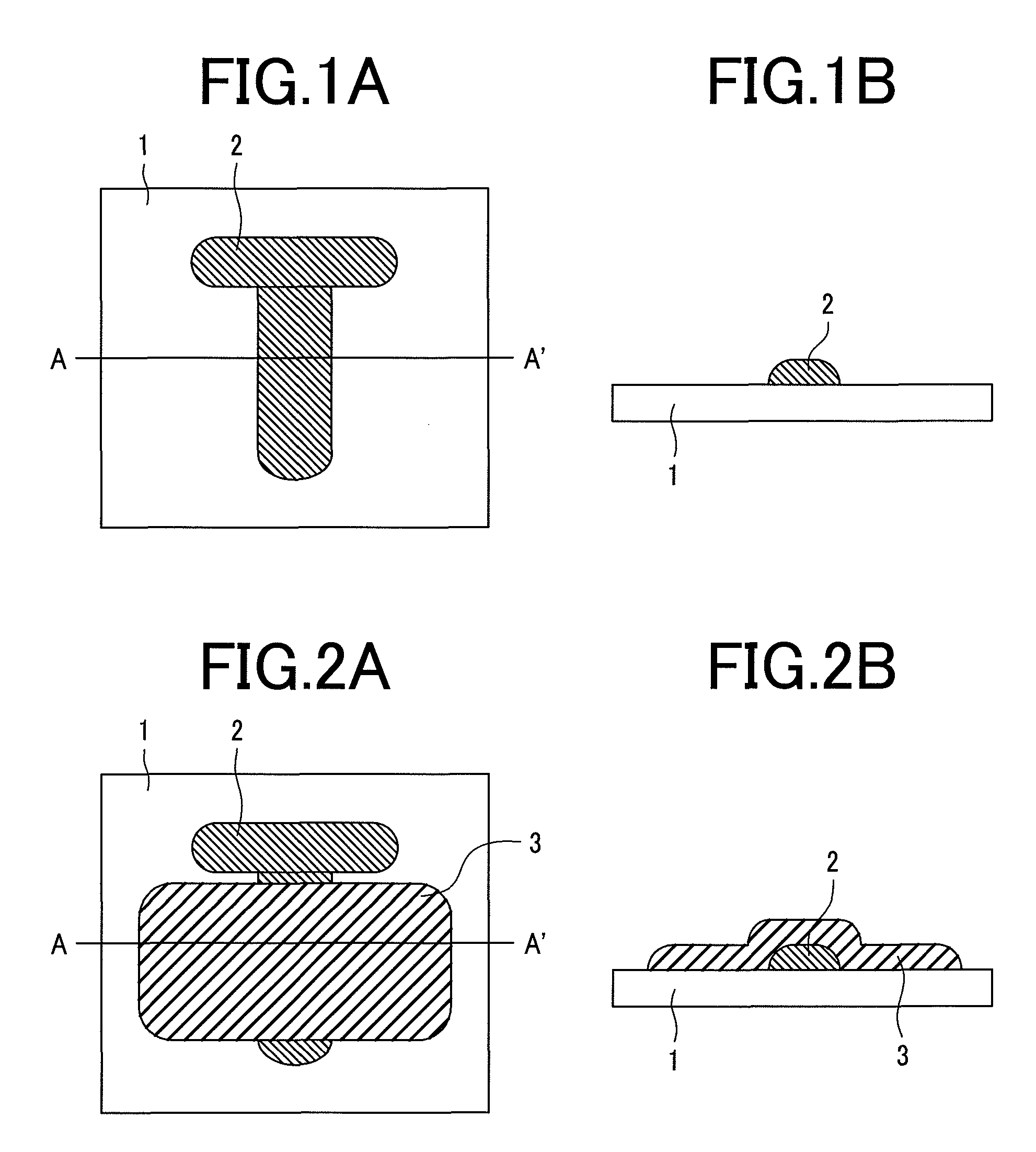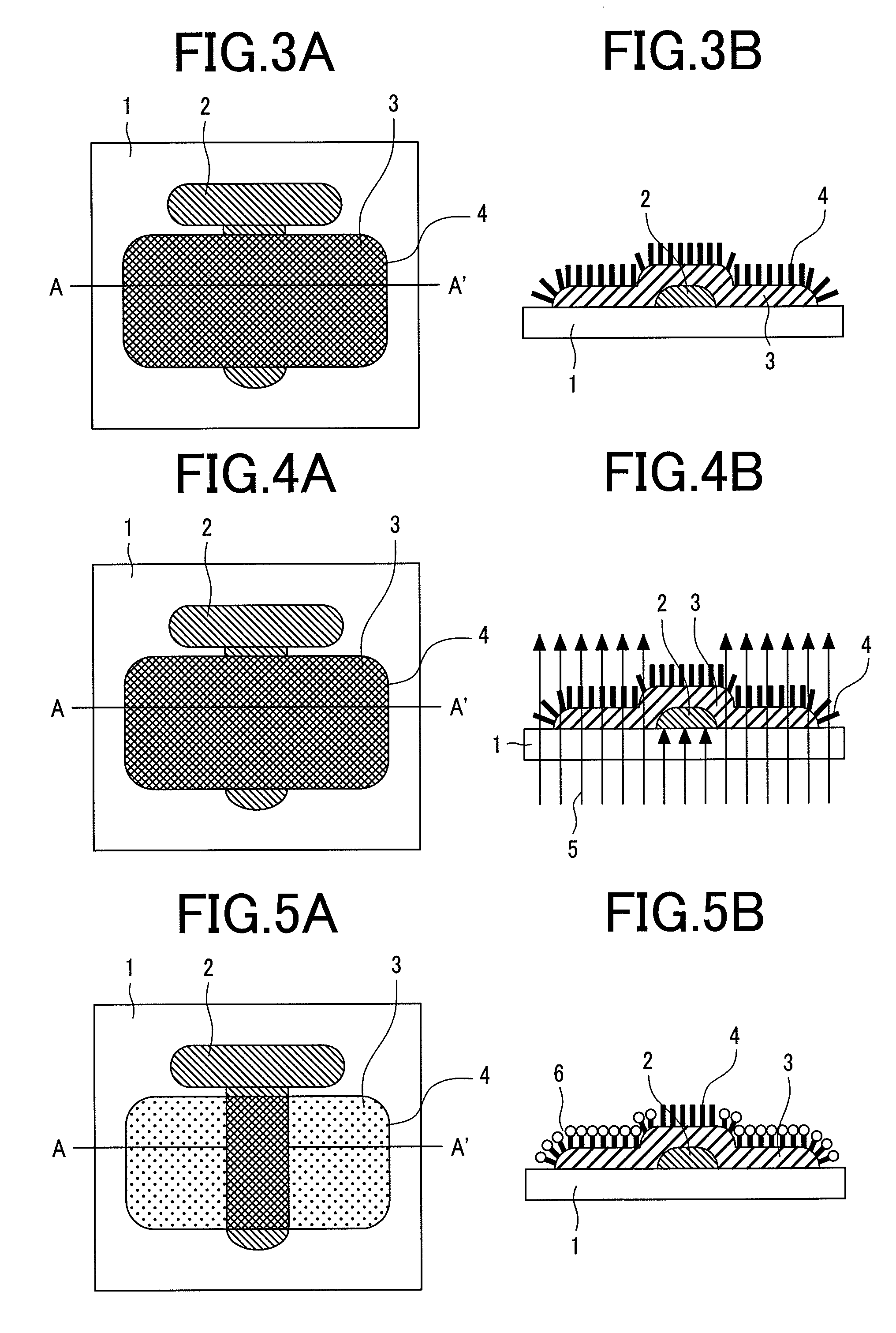Method of manufacturing a semiconductor device having an organic thin film transistor
a semiconductor device and organic technology, applied in the field of manufacturing a semiconductor device having an organic thin film transistor, can solve the problems of increased manufacturing cost, fluctuation of performance, and difficulty in manufacturing a fine tft by printing method, and achieve the effect of increasing parasitic capacitance and lowering cos
- Summary
- Abstract
- Description
- Claims
- Application Information
AI Technical Summary
Benefits of technology
Problems solved by technology
Method used
Image
Examples
first embodiment
[0060]FIG. 1 to FIG. 8 are plan views and cross sectional views showing a device in the order of the manufacturing step to form source and drain electrodes by the exposure from the rear face of a substrate, according to a first embodiment. In each of the drawings, “A” is for the upper plan view and “B” is for a cross sectional view taken along line A-A′ in “A” of the drawings. In the upper plan views and the cross sectional views of the devices shown in the order of the manufacturing steps in the present specification, “A” is the upper plan view and “B” is the cross sectional view.
[0061]Polycarbonate as an organic compound was used for a transparent substrate 1, and a gate electrode shape of 20 μm line width was printed by using gold nano particles dispersed in a toluene solution as an ink by an ink jet printing method and heating the same at a temperature of 200° C. for 5 minutes to form a gold gate electrode 2 (upper plan view: FIG. 1A, cross sectional view: FIG. 1B). The height o...
second embodiment
[0067]This embodiment is an example of forming organic semiconductor transistors by the number of two (19, 20) by the same method as in the first embodiment. FIG. 9 and FIG. 10 show the upper plan view and the cross sectional view of this embodiment. While the method of forming each of the transistors is similar to that for the first embodiment described previously, a drain electrode 6 of a first transistor 19 and a gate electrode 2 of a second transistor 20 are connected by an interconnection 11 after forming each of the transistors in the configuration of the present embodiment. FIG. 9 shows an upper plan view and FIG. 10 shows a cross sectional view taken along cross section A-A′ in FIG. 9. The performance of both of the transistors was quite identical and transistors with less fluctuation of the performance could be prepared.
[0068]The first and the second embodiments show typical examples having particularly high performance in view of both the cost and the performance. Now, oth...
third embodiment
[0080]In this embodiment, an m×n active matrix type thin film transistor substrate comprising thin film transistors in m rows and n columns, and a manufacturing method thereof are to be described with reference to FIGS. 11 to 14. The active matrix type thin film transistor substrate is formed at intersections between m number of gate electrodes each constituting at least a portion of a lower electrode and n number of signal interconnections each constituting at least a portion of the upper electrode. Fundamental preparation procedures are similar to those for the first embodiment. At first, m number of gate interconnections / electrodes 2 in which n number of ring-shaped rectangles each having an opening and disposed in adjacent with each other are connected at least at one or more connection portions 17 (two positions in this embodiment) are disposed in close adjacent with each other by way of a gap 18 (upper plan view: FIG. 11A, cross sectional view: FIG. 11B). Particularly, by defi...
PUM
| Property | Measurement | Unit |
|---|---|---|
| temperature | aaaaa | aaaaa |
| heat resistant temperature | aaaaa | aaaaa |
| displacement | aaaaa | aaaaa |
Abstract
Description
Claims
Application Information
 Login to View More
Login to View More - R&D
- Intellectual Property
- Life Sciences
- Materials
- Tech Scout
- Unparalleled Data Quality
- Higher Quality Content
- 60% Fewer Hallucinations
Browse by: Latest US Patents, China's latest patents, Technical Efficacy Thesaurus, Application Domain, Technology Topic, Popular Technical Reports.
© 2025 PatSnap. All rights reserved.Legal|Privacy policy|Modern Slavery Act Transparency Statement|Sitemap|About US| Contact US: help@patsnap.com



